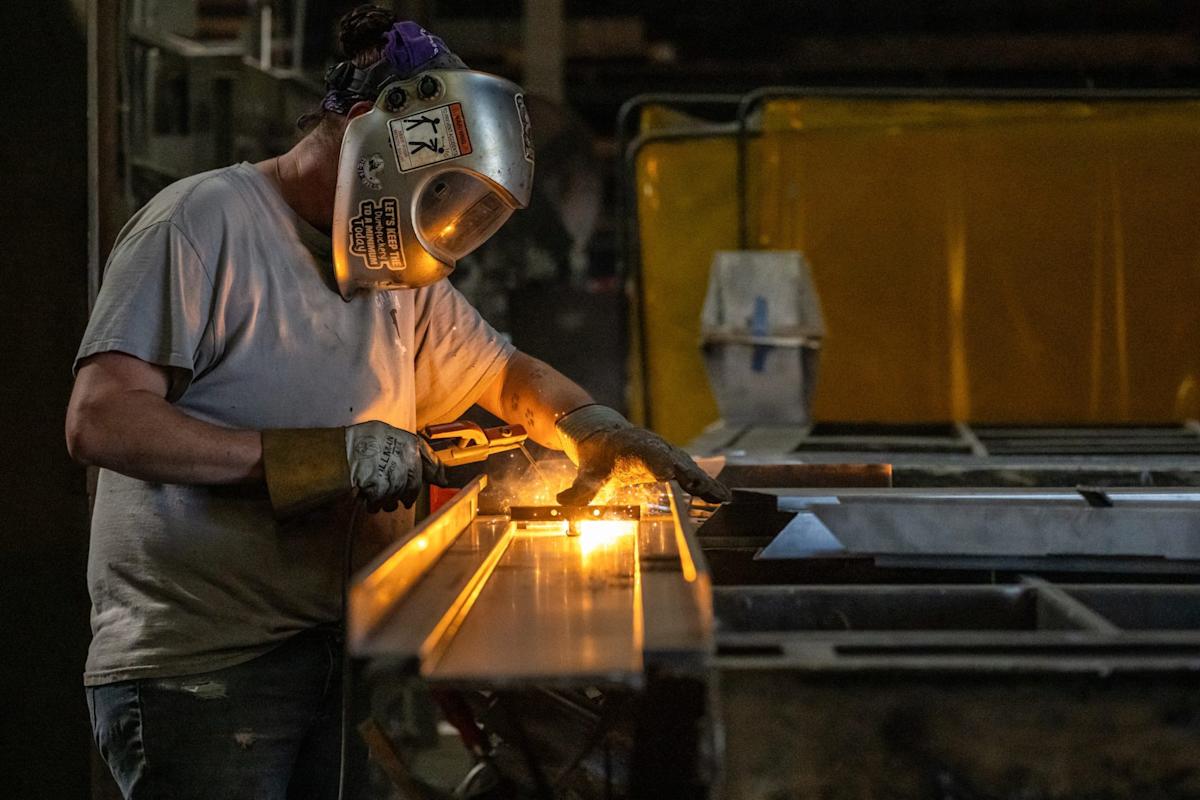-
U.S. manufacturing has decelerated recently, both as a result of increased competition from China and as part of a broader manufacturing productivity slowdown. Goldman Sachs analysts argue tariffs will not lower supply chain and labor costs enough to boost reshoring, and instead, increased automation will be the most likely driver of a manufacturing productivity boost.
As China continues to best the United States in manufacturing capabilities, tariffs may not be America’s best bet to boost factory productivity. Instead, the U.S. should look to AI and automation to gain an edge in manufacturing, Goldman Sachs analysts argue.
President Donald Trump aspires to return factory jobs to American shores by imposing steep tariffs on U.S. manufacturing rivals, but the taxes can only incentivize reshoring so much, analysts said in a note published Thursday. Instead, manufacturers should look to automation and the ever-more-accessible artificial intelligence as their best chance for boosting domestic manufacturing.
“A pickup in the pace of innovation—potentially from recent advances in robotics and generative AI—therefore remains the catalyst most likely to reverse the long-run stagnation in manufacturing productivity,” analyst Joseph Briggs and colleagues said in the note.
As China capitalizes on automation and cheaper labor to grow its export footprint, the Bank of America Institute has found mounting evidence of a recent U.S. manufacturing slowdown, including U.S. Census Bureau data showing new orders for manufactured durable goods decreasing 6.3% in April. The Institute of Supply Management Manufacturing Purchasing Managers’ Index (PMI) has fallen since March, also indicating a contraction.
The U.S.’s productivity woes are part of a larger manufacturing productivity slowdown happening over the last two decades as a result of investment pullback following the global financial crisis, as well as a slowdown in the burst of technological advancements of the early 2000s, according to Goldman Sachs.
Trump’s tariff plans for China—which the president has not disclosed, despite touting a new trade deal—aim to help the U.S. claw back manufacturing opportunities from its economic rival. But while they make consumers’ lives more expensive, they are not a panacea for manufacturers, the bank argued in its note.
“Tariffs are unlikely to result in much reshoring because production costs in other countries are well below the U.S.’ for most products (even after accounting for tariffs), and China will likely continue to grow its exports on the back of cost advantages and industrial policy support,” the note said.
-
U.S. manufacturing has decelerated recently, both as a result of increased competition from China and as part of a broader manufacturing productivity slowdown. Goldman Sachs analysts argue tariffs will not lower supply chain and labor costs enough to boost reshoring, and instead, increased automation will be the most likely driver of a manufacturing productivity boost.
As China continues to best the United States in manufacturing capabilities, tariffs may not be America’s best bet to boost factory productivity. Instead, the U.S. should look to AI and automation to gain an edge in manufacturing, Goldman Sachs analysts argue.
President Donald Trump aspires to return factory jobs to American shores by imposing steep tariffs on U.S. manufacturing rivals, but the taxes can only incentivize reshoring so much, analysts said in a note published Thursday. Instead, manufacturers should look to automation and the ever-more-accessible artificial intelligence as their best chance for boosting domestic manufacturing.
“A pickup in the pace of innovation—potentially from recent advances in robotics and generative AI—therefore remains the catalyst most likely to reverse the long-run stagnation in manufacturing productivity,” analyst Joseph Briggs and colleagues said in the note.
As China capitalizes on automation and cheaper labor to grow its export footprint, the Bank of America Institute has found mounting evidence of a recent U.S. manufacturing slowdown, including U.S. Census Bureau data showing new orders for manufactured durable goods decreasing 6.3% in April. The Institute of Supply Management Manufacturing Purchasing Managers’ Index (PMI) has fallen since March, also indicating a contraction.
The U.S.’s productivity woes are part of a larger manufacturing productivity slowdown happening over the last two decades as a result of investment pullback following the global financial crisis, as well as a slowdown in the burst of technological advancements of the early 2000s, according to Goldman Sachs.
Trump’s tariff plans for China—which the president has not disclosed, despite touting a new trade deal—aim to help the U.S. claw back manufacturing opportunities from its economic rival. But while they make consumers’ lives more expensive, they are not a panacea for manufacturers, the bank argued in its note.
“Tariffs are unlikely to result in much reshoring because production costs in other countries are well below the U.S.’ for most products (even after accounting for tariffs), and China will likely continue to grow its exports on the back of cost advantages and industrial policy support,” the note said.












Leave feedback about this